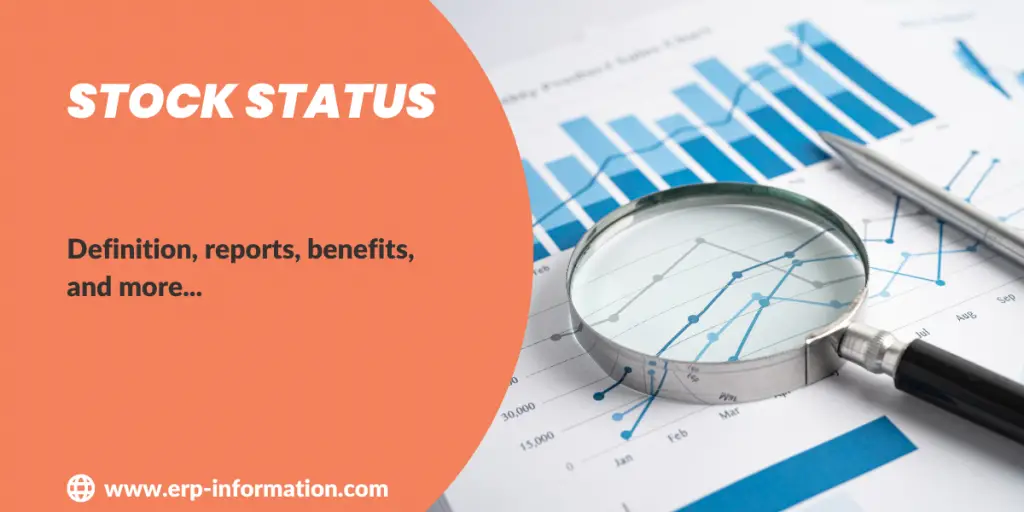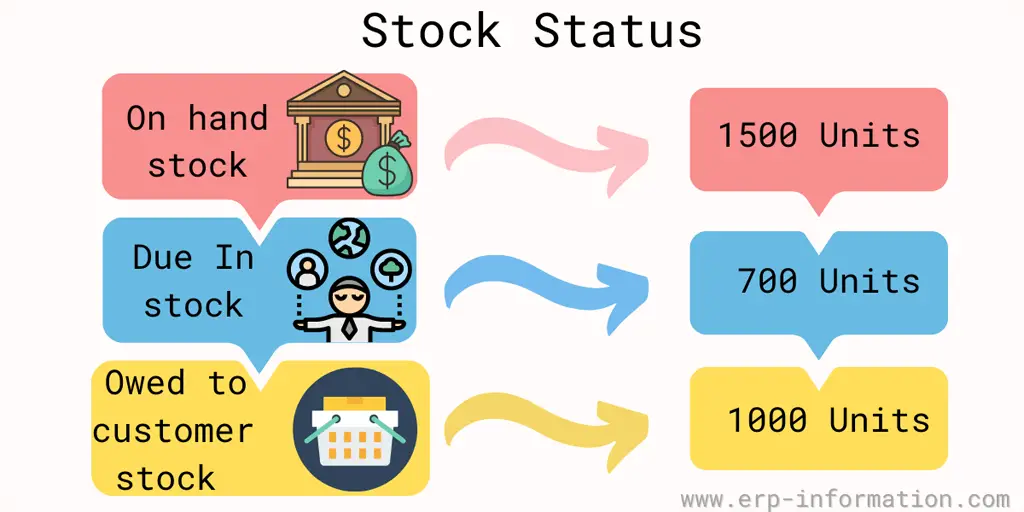In inventory management, stock status refers to the current quantity of an available product for sale. It can track items low on stock or need to be reordered. A stock status report is a tool that can be used to monitor stock levels and keep track of inventory.
The below article tells about the stock status report, its benefits, and what it includes.
Definition
Stock status is a report of what is on hand, what is due in, and what is owed to customers. Stock status is how much inventory of a particular product is available for sale.
Companies track stock levels to ensure they have enough products on hand to meet customer demand, but not so much that they’re tying up too much capital in inventory. Companies can measure stock status in units, dollars, or both.
There are various methods of measuring stock status, but the most common is Days in Supply (DoS).
This measures the average number of days a company has enough inventory on hand to meet customer demand. DoS can be calculated by dividing the number of units in inventory by the average daily sales volume.
What is stock?
Stock is also called inventory in manufacturing industries. Stock means goods or raw materials that an organization needs and holds for resale or production.
In business, stock (or inventory) refers to a company’s items for sale. The term can refer to physical items, like products on store shelves, and digital items, like songs or movies stored on a company’s servers.
When a company talks about its “stock,” it’s usually referring to its physical inventory. This is the stuff that the company has in its warehouses and stores, and it’s what the company sells to customers. The “stock” can be anything from clothes and cosmetics to cars and computers.
Companies track their stock levels carefully to ensure they have enough items on hand to meet customer demand.
What is the stock status report?
A stock status report gives you information about the inventory levels for a particular product or group of products. This can help manage your stock, ensuring that you have enough product on hand to meet customer demand and avoid potential stockouts.
The report will typically include data on current inventory levels, projected future demand, and reorder points. In some cases, stock status reports may also include information on customer order backlogs.
What does the stock status report include?
The stock status report or inventory status report includes the following things.
- Hand outed: It shows the number of products with more demand from the customer that is not readily available to supply.
- On hand: It shows the number of products available to supply.
- Made to Order: The number of products available in 4-5 days based on confirmed orders.
- Not available: It shows the temporary unavailability of the product.
- Discontinued: It shows the product decided by the manufacturer not to produce. Once the current stock goes out, the product will not be available.
- Ready to ship: It shows the number of products readily available to ship.
- Sold out: It tells about the number of products consumed because of the demand.
- Temporarily unavailable: It tells that products are currently unavailable. However, backorders will be taken once products are available to ship.
Benefits
The stock status report helps your business with a clear pitcher of inventories.
- It gives a clear idea about the number of units ready to deliver.
- It helps determine the number of units to be produced per the requirement.
- It helps you to avoid stock-out problems.
- It helps to speed up the production process as per the demand.
- It informs you about the overstock items so you can reduce your production of those items.
Conclusion
In a nutshell, stock status reports provide detailed information about the inventory levels for particular products. This can help businesses ensure they have enough products to meet customer demand and avoid potential stockouts.
The report will typically include data on current inventory levels, projected future demand, and reorder points. In some cases, it may also include information on customer order backlogs.
As a result, using a stock status report better manages inventory levels, speeds up production based on demand, and avoids stock-out problems.
Overall, stock status reports are helpful for businesses that want to optimize their inventory management. By understanding current inventory levels and projected future demand, companies can make informed decisions about production levels and avoid potential disruptions in the supply chain.

